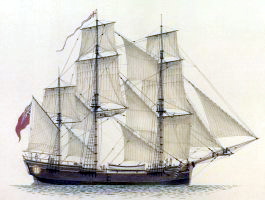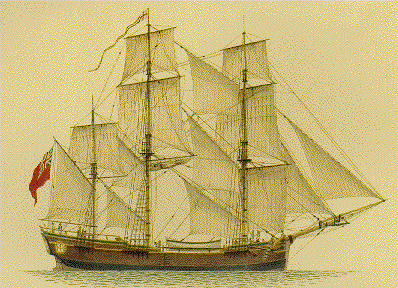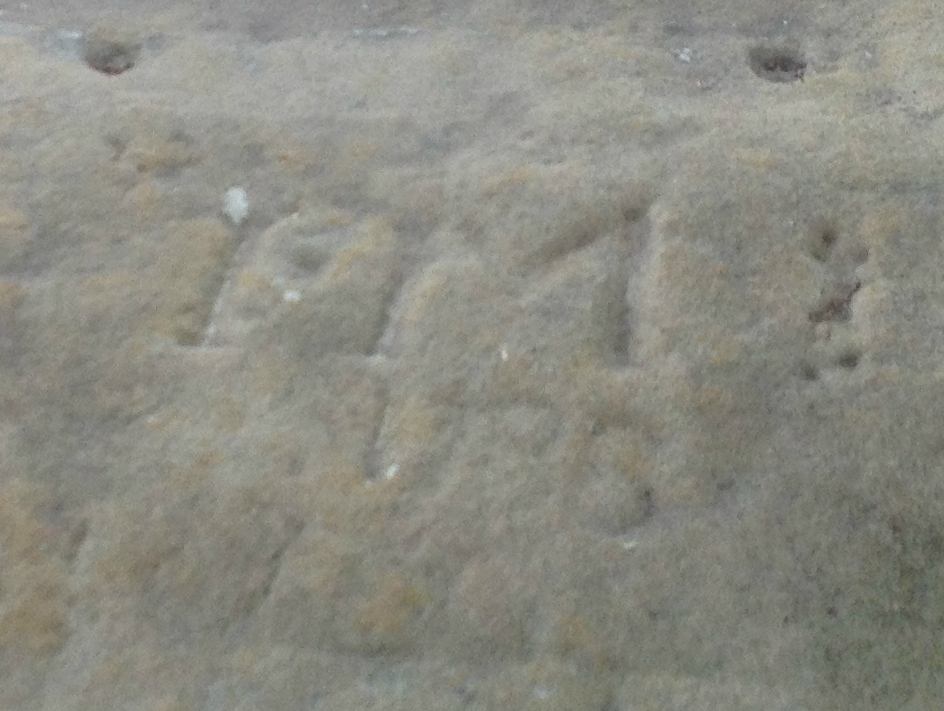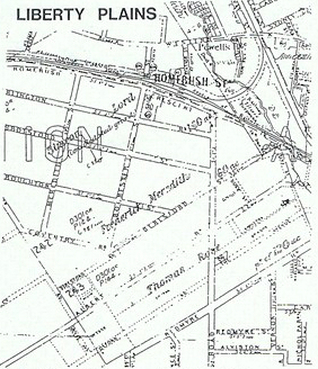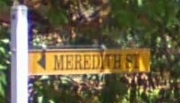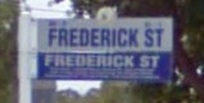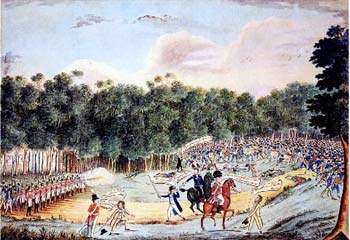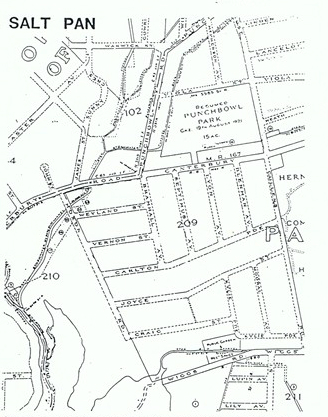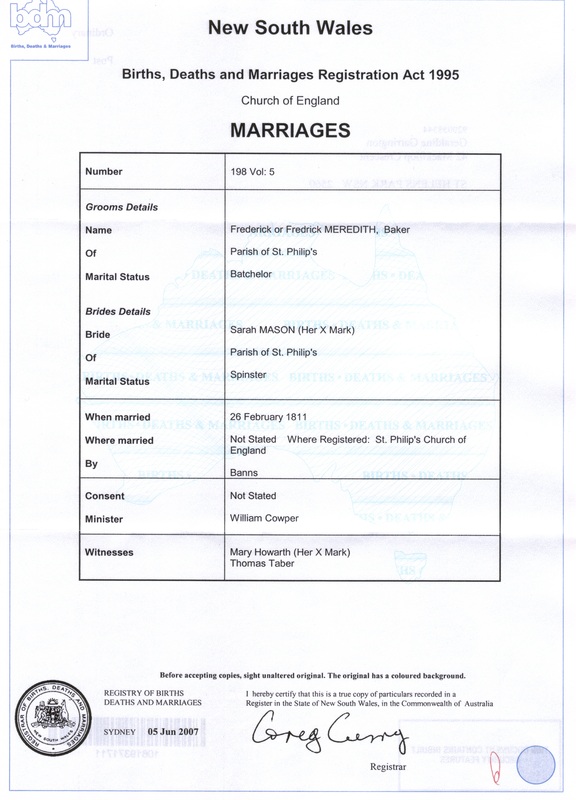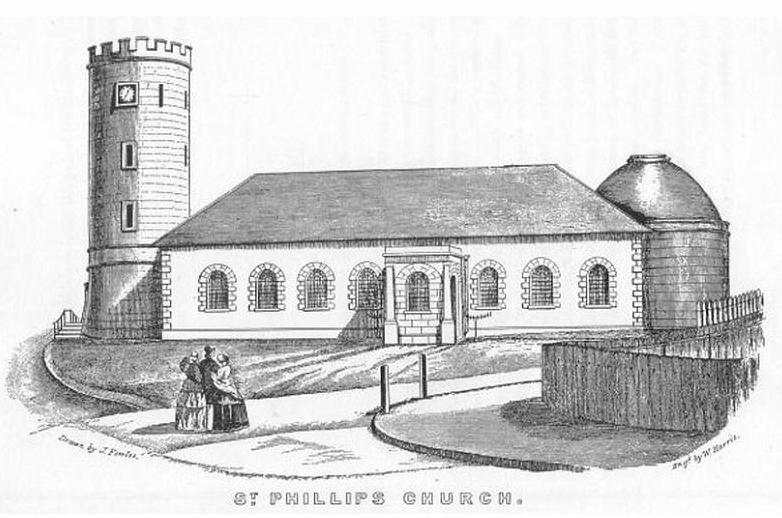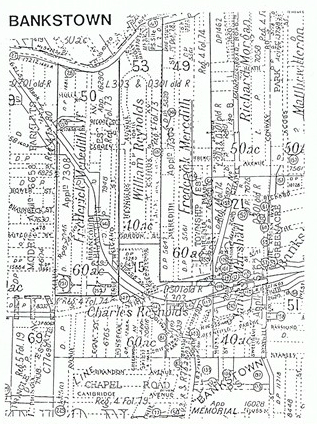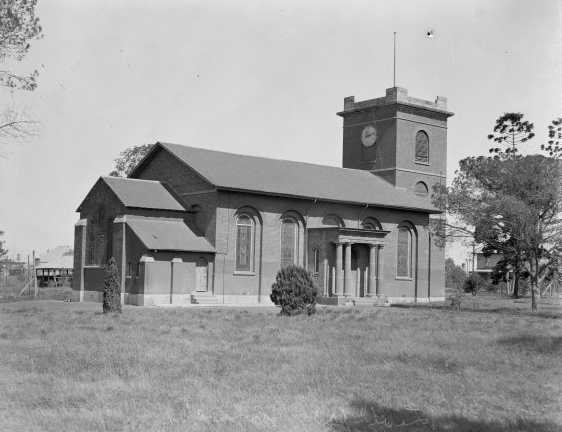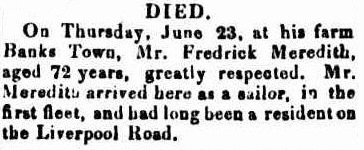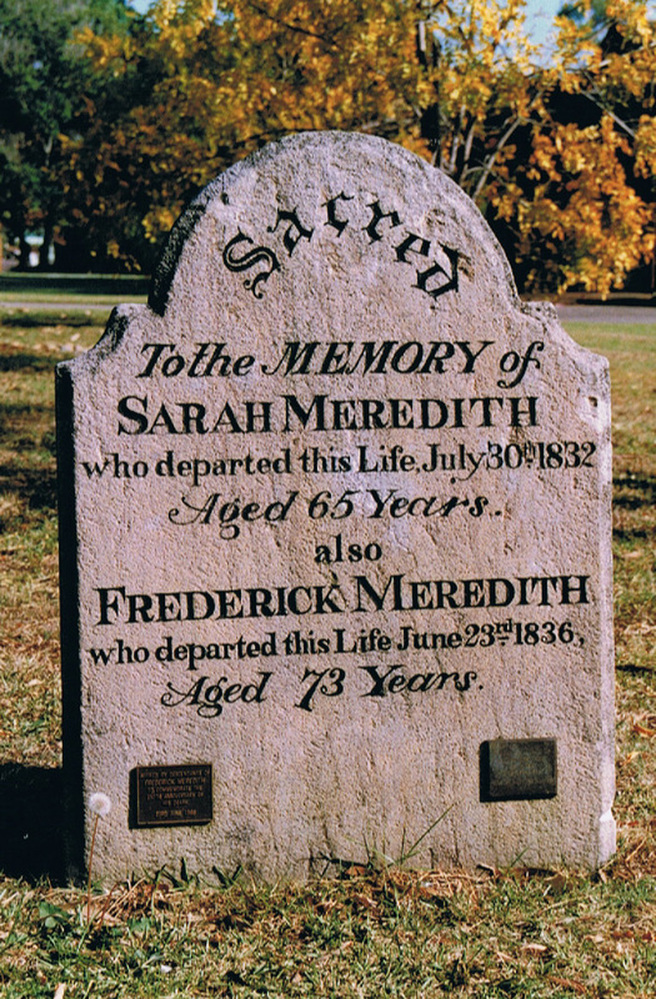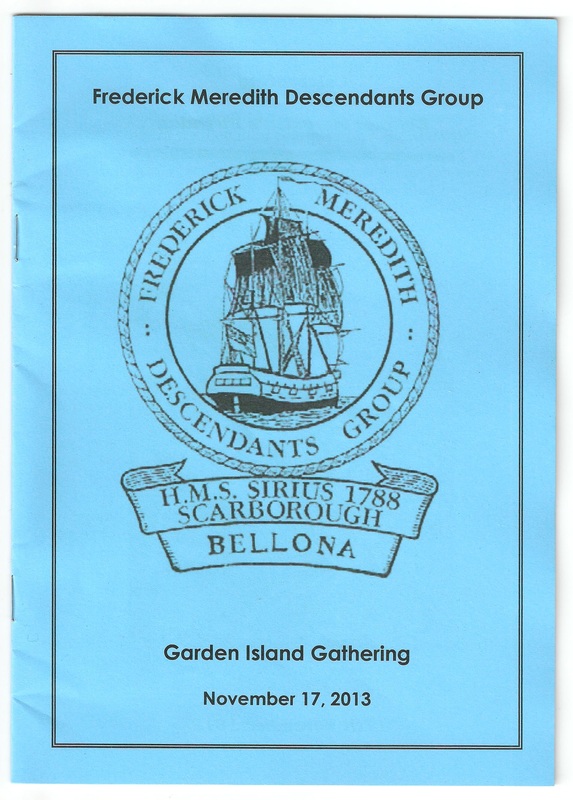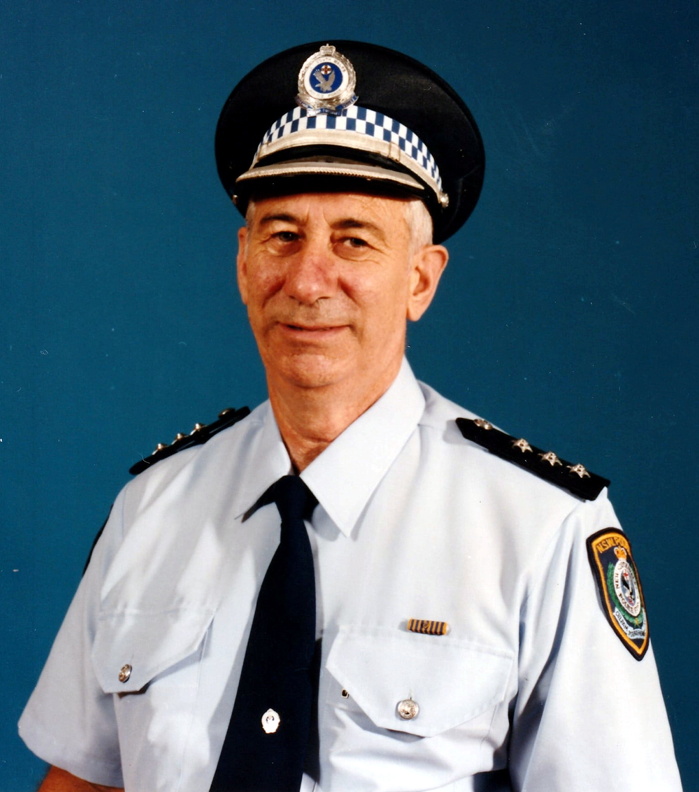Frederick MEREDITH
Frederick MEREDITH
late of Liverpool, NSW
New South Wales Police Force
Regd. # ?
Rank: Chief Constable
Stations: Sydney area (see below) and Liverpool
Service: 1800 – 1811.
Was 1 of 50 ‘free men’ who volunteered and were accepted to join the Loyal Sydney Association set up by Governor Hunter to quell a possible uprising by ‘the Irish’. They were under the control of a civilian by the name of William Balmain. Frederick was involved in the Battle of Vinegar Hill in 1804. The 50 were known as armed volunteer Police (Militia)
1811 – 1828.
Sworn in 1811 as Constable under the newly formed NSW Police set up by Governor Macquarie.
Served at Liverpool 1822-1828 becoming Chief Constable in 1826.
Believed to have resigned in *1828 to become the first Post Master at Liverpool Post Office.
- A story, below, indicates that Meredith – as the Chief Constable of Liverpool, was shot in both legs during a bush-ranger’s robbery in 1830.
Awards: ?
Born: 5 October 1763 in Dinham, Ludlow, Shropshire, England
Died on: Thursday 23 June 1836
Event location: Bankstown, NSW
Cause: ?
Age: 73
Funeral date: ?
Funeral location: ?
Buried at: Pioneer Memorial Park, Liverpool
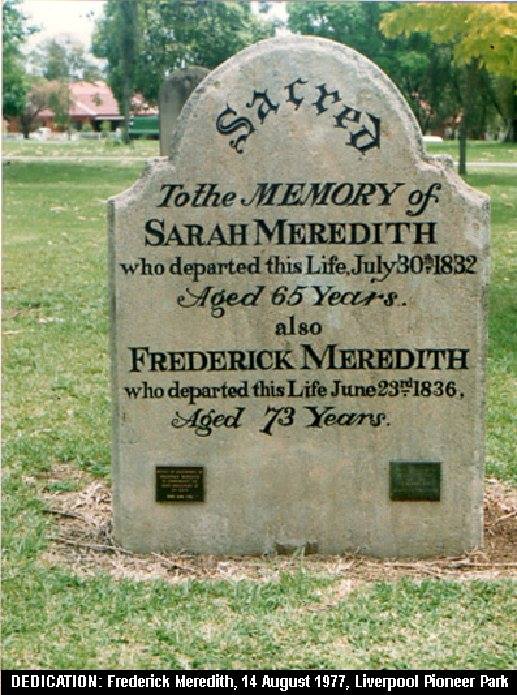
FREDERICK is NOT mentioned on the Police Wall of Remembrance *NEED MORE INFO
Funeral location: ?
Frederick is believed to be the “third” Chief Constable of Liverpool until 1833.
He arrived on the First Fleet on the Scarborough.
His grave is at Liverpool Cemetery.
In 1811 Frederick joined Governor Macquarie’s police force. He was later appointed the first constable, then the “third” chief constable of Liverpool.
He remained in the police until 1833, holding positions of Constable, Chief Constable & District Constable.
Info via Jay Chappo – Beyond Courage FB page – 20 August 2015
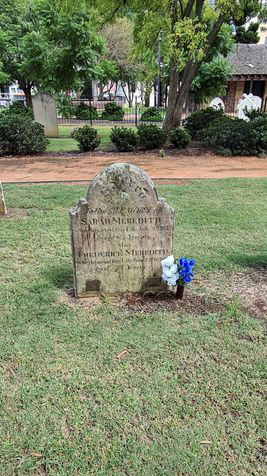
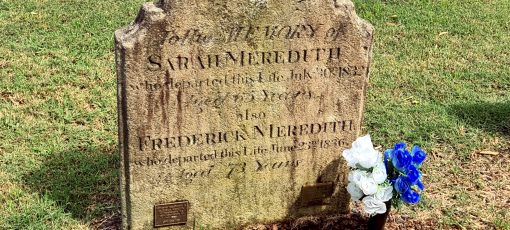
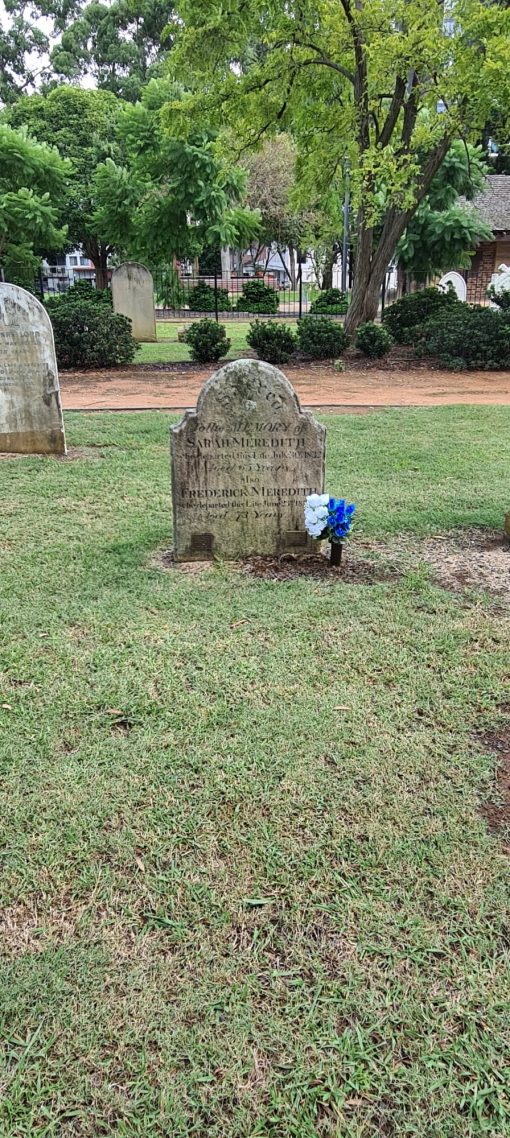

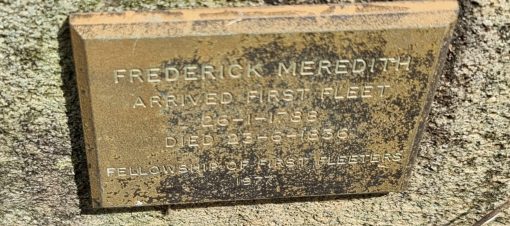

They Sydney Gazette & New South Wales Advertiser Saturday 7 February 1835 page 2 of 4
SUPREME COURT.
FRIDAY, FEBRUARY 6.
(Before Mr. Justice Dowling and a Civil Jur..)
In a murder trial in the Supreme Court on Friday 6 February 1835, Frederick MEREDITH describes himself to the Court as “Chief Constable at Liverpool”
http://trove.nla.gov.au/ndp/del/article/2197282
They Sydney Gazette & New South Wales Advertiser Thursday 7 July 1836 page 3 of 4
DIED.
On Thursday, June 23, at his farm Banks Town, Mr. Fredrick Meredith, aged 72 years, greatly respected. Mr. Meredith arrived here as a sailor, in the first fleet, and had long been a resident on the Liverpool Road.
http://trove.nla.gov.au/ndp/del/article/2205272
NSW Police Heritage Story p35 & 36
Ordinary constables appointed to operate under Macquarie’s 1811 regulations were, John Jones, John Godwin, Edward Tulby, Matthew Quinn, Patrick Field, Samuel Reid, George
Cochrane, John Ayres, Joseph Evans, John Smith, James Mannek, William Goodman, William Donnelly, Abraham Lee, William Welch, Joseph Welch, Michael Simpson, John
Pauley, John Webb, Thomas Colebrook, James Phelan, William Thorn, Charles Evans, Thomas Jones, Abraham Bateman, George Atkins, John Anslie, William Foster, John Randall, Robert McAlister, Aaron Packenham, Thomas Mansfield, John Burgess, Thomas Salmon, John Smith, George Phillips, Ambrose McGuiggan, Gilbert Baker, Frederick Meredith, Joseph Smith, John Lyster, Thomas Dunn, James Chamberlin (also shown as Chamberlain).
Matthew Gibbons was Clerk of the Market and William Hawkins was Assistant Clerk of the Market.
Daniel Cubitt was Gaoler. In 1811, Macquarie also introduced traffic regulations.
NSW Police Heritage Story p231
Liverpool Police complained in July, 1845, that the police establishment there was completely without serviceable firearms. Consistent with outlying districts of Sydney in
those days, Liverpool District was plagued at times by bushrangers. Liverpool Police, like police throughout the colony, faced dangerous situations in which they depended on
their government issue firearms.
For instance, in 1830, Liverpool’s Chief Constable Frederick Meredith, was seriously wounded in a clash with a bushranger gang. ( Later reading, below, indicates that this would have been Frederick Meredith ( Jnr ). )
In March, 1830, a gang of 6 bushrangers entered a public house on the Liverpool Road and stole 8 pounds in cash, plus 5 gallons of spirits and a brace of pistols.
The robbers later entered the residence of a man named Jackson on the Liverpool Road and gained entry to the premises by posing as constables.
When the robbers entered the premises, the men were confronted by Jackson and Chief Constable Meredith. The candle illuminating the inside of Jackson’s place was extinguished and an affray followed, resulting in Jackson and his wife being injured.
Meredith was shot in both legs.
One of the gang was captured, but the other bushrangers escaped, leaving behind a number of firearms.
Two of the bushrangers were John McNamara and William Dalton.
Following the demise of Dalton and McNamara, in June, 1830, McNamara was shot dead by Samuel Horn, wardsman of Parramatta, and Dalton came to the end of his life on the
hangman’s rope, Frederick Meredith was given a land grant for his conduct in protecting Jackson’s premises.
The Governor also commended Jackson for his conduct against the bushrangers. Jackson’s assigned servant William Johnston, received a ticket of leave for courageously protecting his master’s property.
Frederick Meredith
Frederick Meredith arrived with the First Fleet as a steward to Captain John Marshall of the convict transport Scarborough. He came before a magistrate for exchanging a “squirrel” for rum, apparently on the orders of the captain, and was sentenced to 100 lashes. Governor Phillip reduced the sentence to 50 lashes on representations from the captain and others. Shortly before the Scarborough sailed to China, he signed on to the HMS Sirius with the duties of a baker. He was twenty three and gave his birthplace as Denham Wales.
Convict transport Scarborough
His initials are still visible at Garden Island where the crew were assigned to preparing a garden. After the Sirius was wrecked off the coast of Norfolk Island on 19 March 1790, Frederick and some of the other crew members returned to Port Jackson on HMS Supply.
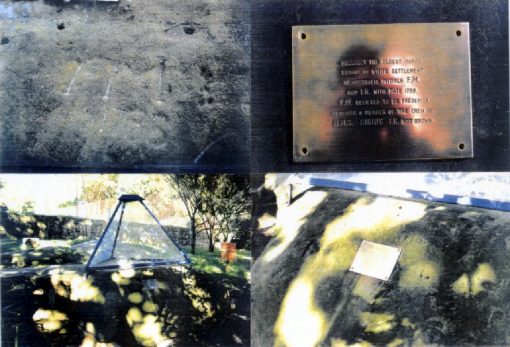
” Possibly the oldest marks er?ant of white settlement in Australia.
Initials F.M. and I.R. with date 1783.
F.M. believed to be Frederick MEREDITH, a member of the crew of H.M.S. SIRIUS.
I.R. not known. ” Frederick Meredith’s initials at Garden Island
Captain Hunter of the wrecked Sirius and the crew embarked for England in March 1791. Frederick was then paid off by the navy in 1792 and decided his future lay in Botany Bay.
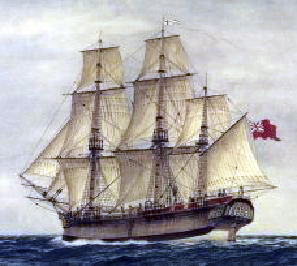
HMS Sirius
He returned on the Bellona in 1793 with a small group of the first free settlers. They were given land grants at Liberty Plains (now Strathfield). His second grant was 60 acres, where Rhodes railway station is today. Both land grants were unsuited to farming.
Frederick received a further grant of 120 acres near his farm at Salt Pan Creek (pictured at left and now part of Punchbowl) in 1809, for aiding a neighbour in an affray with the aborigines.
He also had a bakery in Chapel Row (now Castlereagh Street) which he sold in 1810.
Frederick had several children with convict women: Charlotte born to Mary Allen (Allein) in 1790; Amelia to Anne Case in 1793; and Charlotte to Mary Kirk in 1794.
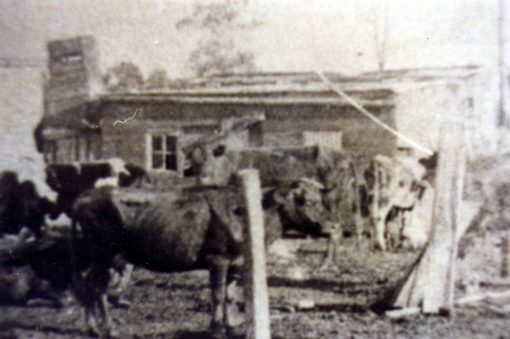
Salt Pan Creek Grant
In 1800, Governor Hunter set up the Loyal Sydney Association, following reports of rebellion by Irish convicts. Frederick enrolled as a volunteer armed policeman and was involved in the Vinegar Hill uprising.
Frederick married Sarah Mason, a convict who also arrived on the Bellona. Their relationship had begun in 1800 and they were married in 1811 when Frederick joined Governor Macquarie’s police force. He was later appointed the first constable, then chief constable of Liverpool. Their children were Frederick junior, born in 1801, Sophia in 1803, Elizabeth in 1806, William in 1807, Anne in 1811 and Eleanor in 1813.
In 1823 he joined the Liverpool and surrounding districts police force. He remained in the police until 1828, holding positions of Constable, Chief Constable and District Constable. His final land grant was 60 acres at Liverpool Road, Banks Town in 1826. The farm was called Gunsborough.
The first post office was opened at Liverpool in 1828 and Frederick acted as the first postmaster until Donald MacLeod took up his appointed position.
Frederick and Sarah lived at Gunsborough until her death in 1832. He married Mary Ann Day in 1833. He died at the property in 1836 and was buried next to Sarah at Liverpool Cemetery.
Family History by Clayton Talbot
Frederick Meredith
|
Birth
Death Marriage Spouse Marriage Spouse Marriage Spouse Marriage Spouse Marriage Spouse Father Mother Sibling/s Children |
5 October 1763
23 June 1836 (didn’t marry) Mary Allen (didn’t marry) Anne Case (didn’t marry) Mary Kirk 26 February 1811 Sarah Mason 19 February 1833 Mary Ann Day Charlotte Allen(mother; Mary Allen) Amelia Case (mother; Anne Case) Charlotte M Kirk/Meredith (mother; Mary Kirk) Frederick Meredith (mother; Sarah Mason) Sophia Meredith (mother; Sarah Mason) Elizabeth Meredith (mother; Sarah Mason) William Meredith (mother; Sarah Mason) Ann Meredith (mother; Sarah Mason) Eleanor Caroline Meredith (mother; Sarah Mason) |
Location
Location Location Location LocationLocation Location |
Dinham, Ludlow, Shropshire, England
Bankstown, Sydney, New South Wales, Australia Sydney, New South Wales, Australia Liverpool, Sydney, New South Wales, Australia |
Frederick Meredith was born on the 5th of October 1763. It is thought that he was born in Dinham, Ludlow, Shropshire, England. It is unclear where exactly Frederick was born, with people speculating that he may have been born in Denham, Buckinghamshire, London, England which is just South East of Harefield, home to many bakers, which Frederick later became (see Frederick Meredith by David Swinfield).
Many of his descendants are currently using DNA research to try and narrow down an area of the UK he and his ancestors are from. If you are one of Frederick’s descendants and would like to know more you can get in touch with Paul Gallagher at the Frederick Meredith Descendants Group (FMDG).
Not much is known of Frederick’s early life in England.
On the 13th of May 1787 Frederick left from Portsmouth, England on board the “Scarborough” as part of the First Fleet. There were 208 male convicts onboard. Frederick came free as steward to Captain John Marshall.
|
The “Scarborough” was a ship of 430 tons built at Scarborough in 1782. She was 111 feet (34m) long and 30 feet (9m) wide. The prison deck was very small and cramped. The height of the space was only 53 inches (135cm). The ship had a contract with the British Government to carry convicts. The owners were paid at a rate of 10 shillings per ton per month. They had to agree to keep the prisoners secure and in safe custody. After transporting the convicts to New South Wales, the “Scarborough” was under contract to work for the East India Company. The “Scarborough” sailed back to England and returned to Port Jackson in the Second fleet. Apart from the ‘Sirius’ and ‘Supply’, she was the only other ship from the first fleet to return.
|
The First Fleet consisted of 11 ships which sailed from Great Britain on the 13th of May 1787 with about 1,487 people, including 778 convicts (192 women & 586 men), to establish the first European colony in Australia. The fleet was led by Captain Arthur Phillip.
The ships arrived at Botany Bay between 18 & 22 January 1788. HMS Supply arrived on the 18th of January. The “Alexander”, “Scarborough” & “Friendship” on the 21st of January. The remaining ships, “Charlotte”, “Lady Penrhyn”, “Prince of Wales”, “Borrowdale”, “Fishburn”, “Golden Grove” & “Sirius” on the 22nd of January.
So on the 21st of January 1788, aged 24 years, Frederick arrived in Botany Bay, Sydney, with 201 male convicts, 30 crew and 50 marines surviving the 251 day voyage aboard the “Scarborough”. They sailed into Port Jackson (Sydney Harbour) on the 26th of January. The new site had everything the first settlers needed; deep water close to the shore, shelter and fresh water. Phillip named the site Sydney Cove, after Lord Sydney the British Home Secretary. Today this date is still celebrated as Australia Day, marking the beginnings of European settlement.
This was one of the world’s greatest sea voyages — eleven vessels carrying about 1,487 people and stores had travelled for 252 days for more than 15,000 miles (24,000 km) without losing a ship. Forty-eight people had died on the journey, a death rate of just over three per cent. Given the rigours of the voyage, the navigational problems, the poor condition and sea-faring inexperience of the convicts, the primitive medical knowledge, the lack of precautions against scurvy, the crammed and foul conditions of the ships, poor planning and inadequate equipment, this was a remarkable achievement.
On the 22nd of February 1788 Frederick was charged with exchanging goods with convict James Stow. Frederick had given the convict beef and bread as well as rum in exchange for a ‘curious beast’ a possum. Such exchanges were against government orders, and although Meredith had his master’s
permission, he was sentenced to receive 100 lashes, on his bare back, with a cat of nine tails, in the middle of the convict’s camp. Governor Phillip reduced the sentence to 50 lashes in response, said surgeon Arthur Bowes Smyth, to appeals from ‘several gentlemen’ who respected Meredith and who believed the punishment too harsh for the crime. He was the fourth person to appear before the magistrate and received 50 lashes as punishment.
|
In 1788 Frederick was assigned to look after the vegetable patch on Garden Island in Sydney Harbour. While there Frederick, along with 2 other European Settlers, carved his initials FM along with the year 1788 in a rock. The other initials are believed to belong to marine private Joseph Redford of HMS Sirius and William Bradley, first lieutenant of HMS Sirius, who was a cartographer. Frederick was chosen because of his ability to both read and write and thus his ability to document the time spent there. All three men were crew members of HMS Sirius during the winter months of 1788 at a time when Sirius was anchored off Garden Island and the ship’s crew had planted a garden there to grow vegetables to help the reduction of scurvy. |
Frederick was on the “HMS Sirius” when it sailed from Sydney in October 1788 for the Cape of Good Hope, South Africa in search of food for the starving colony. They returned to Sydney in May 1789.
On the 9th of May 1790 a daughter was born to Mary Allen. She was named Charlotte.
In Sydney he was given the care of 25 sheep and lambs, the property of commissary John Palmer. In August, Frederick and Mary gave evidence before the Court of Criminal Jurisdiction in the trial of Hugh Low, charged with stealing one of the lambs. Low was sentenced to death and executed the next day. Judge-Advocate David Collins noted that no leniency could be extended because ‘the preservation of our stock was an object of so much consequence to the colony’.
After being back in Sydney for 1 month he then departed aboard the Dutch merchant ship “Waakzaamheid” (alternate spelling “Waaksamheyd”) bound for England, with 125 men on board. He was hired to sail to Batavia to collect supplies and then on to England for Captain John Hunter to face court-martial, for the loss of HMS Sirius, in which he was eventually honourably acquitted.
On the 22nd of April 1792, Frederick arrived in Portsmouth, England aboard the “Waakzaamheid”. Owing to her bad sailing, contrary winds, and calms, the voyage to Batavia had lasted for 26 weeks (onboard they only had provisions for 16 weeks). While attempting to get provisions at Mindanao, the party had a serious affray with the Malays, fortunately without sustaining any loss.
Unknown to him, back in Sydney his daughter Charlotte had died in May 1792 and the child’s mother Mary Allen was living with another convict, Edward Pales.
Frederick departed Gravesend in Kent, England on the 8th of August 1792 aboard the “Bellona”. After a 163 day voyage the “Bellona” arrived in Sydney Harbour on the 16th of January 1793.
The ship was carrying 17 female convicts, including Ann Case whom he had impregnated during the voyage and Sarah Mason who was to become his future wife and mother to 6 of his children. His daughter, Amelia Meredith, born to Ann Case, was born on the 10th of May 1793. The affair with Ann was brief and by the time Amelia died, on the 27th of February 1794, Frederick had formed a liaison with Mary Kirk, who was transported on the “Royal Admiral” in 1792.
|
On the 28th of May 1793 Frederick was granted 60 acres of land at Liberty Plains (now Strathfield) which he named “Charlotte Farm”. He later sold this property to Thomas Rose, as it was unsuitable for farming. The earliest use of the name Liberty Plains is found in the description of grants of land to Thomas Rose, Frederick Meredith, Thomas Webb and Edward Powell on 28 May 1793. They had arrived as passengers on the “Bellona” in January of the same year. With the help of families and servants, they cleared the land and grew wheat and corn. However, the fertility of the ground was exhausted within four to five years, so that their families were dependent on government rations. Clearing the land was slow. Samuel Crane was killed in 1794 by a falling tree when felling timber on his 25 acres at Concord. His farm was advertised for sale as having ‘a comfortable hut, four acres planted to corn and half an acre to potatoes’. |
On the 26th of April 1794, Frederick fathered another child, this time to Mary Kirk. The daughter was named Charlotte. Charlotte and a man named William Stewart had 3 children; Jane Rebecca, Robert, and John, born in 1812, 1816, and 1818. Charlotte then married James Charles Farrell in 1825. Their children were James Lawrence (1825), Mary Elizabeth (1828), Charlotte Rosina (1831), Charles Frederick (1833), and William Thomas (1835). She died in 1852 in Port Macquarie, New South Wales, aged 58.
On the 11th of November 1794 Frederick received his 2nd land grant, 60 acres at Concord which he named “Charlotte Field”. He later sold this property in 1798 to John Colethread/Coulthread for 87 pounds, as it too was unsuitable for farming.
On the 17th of March 1801, Frederick’s partner Sarah Mason gave birth to a boy, Frederick Meredith Junior. Frederick and Sarah would have 6 children in total; Frederick, born 1801, Sophia, born 1803, Elizabeth, born 1805, William, born 1807, Ann, Born 1811, and Eleanor Caroline, born in 1813. Frederick and Sarah would later marry in 1811.
In September 1800 he was subscribed to the rules and orders of the Sydney Loyal Association (an armed body which was formed to guard against the possibility of an insurrection by seditious Irish convicts). Governor Hunter set up the Sydney Loyal Association in 1800, following reports of rebellion by Irish convicts. Frederick volunteered as an armed policeman & was involved in the Vinegar Hill uprising.
|
On 4 March 1804, 233 convicts led by Phillip Cunningham, escaped from a farm, intent on capturing ships to sail to Ireland. In response, martial law was quickly declared in New South Wales. The mostly Irish rebels, having gathered reinforcements, were hunted by the colonial forces until they were sequestered on 5 March 1804 on a hillock nicknamed Vinegar Hill. Under a flag of truce, Cunningham was arrested and troops charged and the rebellion was swiftly crushed by raid. Of the nearly 300 rebels directly engaged in the battle, 15 were killed, nine executed, seven whipped with 200 or 500 lashes then allotted to the Coal River chain gang, 26 sent to the Newcastle coal mines, others put on good behaviour orders against a trip to Norfolk Island, and most pardoned as having been coerced into the rising. Cunningham was court martialled under the Martial Law and hanged at the Commissariat Store at Windsor. It was the first and only convict uprising in Australian history.
|
|
Frederick was awarded a 3rd Land Grant of 120 acres by Governor Lachlan Macquarie in the Botany Bay district Salt Pan Creek (now Punchbowl) on the 1st of January 1810. It was called “Meredith’s Farm” and was bounded on the southern side by a line of ponds, which provided the property with water. This grant was awarded for aiding a neighbour in an affray with the aborigines. New farms bordered the pathways to the Georges River, Kogarah Bay and Salt Pan Creek, and when William Bond and Frederick tried to occupy their land between Cox’s Creek and Salt Pan Creek, they had to battle a possession dispute with Aboriginal leader Tedbury and his group, the Gwea Gal tribe. During this clash, a spear went close enough to graze Frederick’s ear. Frederick and the other settlers retreated, only to return when the aborigines had moved on. |
In 1811 Governor Lachlan Macquarie formed a regular police force and Frederick was among those appointed as constable. He eventually became the first Chief Constable at Liverpool NSW Australia.
He married Sarah Mason on the 26th of February 1811 at the St Phillip’s Church of England in Sydney.
On the 23rd of May 1822, he was appointed constable at Liverpool. On the 11th of March 1823, Frederick was nominated to act as Chief Constable at Liverpool.
In 1828, when the first post office was opened at Liverpool, Frederick acted as the first postmaster until Donald MacLeod took up his appointed position.
Frederick remained Chief Constable at Liverpool up until at least 1833.
|
In 1831, aged 68, a 4th Land Grant was awarded to Frederick of 60 acres at Liverpool Rd, Bankstown (now the Hume Highway). Although promised earlier (by Governor Macquarie) the grant was not made legal until signed by Governor Darling. The farm was named “Gunsborough”. |
|
Members of Frederick’s descendants meet once a year as part of the Frederick Meredith Descendants Group. In 2013 they met at Garden Island, where Frederick’s initials are carved, on the 200th anniversary of the birth of his youngest child Eleanor Caroline Meredith. |
References
http://home.vicnet.net.au/~firstff/scarbor.htm
http://home.vicnet.net.au/~firstff/sirius.htm
http://home.vicnet.net.au/~firstff/supply.htm
http://firstfleetfellowship.org.au/ships/hms-sirius/
http://www.australiaforeveryone.com.au/places_convict_ff.htm
http://www.historyservices.com.au/nsw_colonial_chronology_1804_1817.htm
http://www.historyservices.com.au/nsw_colonial_chronology_1770_1803.htm
http://en.wikipedia.org/wiki/Castle_Hill_convict_rebellion
http://www.fellowshipfirstfleeters.org.au/frederick_meredith.htm
http://nla.gov.au/nla.pic-vn6189817
http://dictionaryofsydney.org/entry/aboriginal_people_of_the_cooks_river_valley#ref=92162
http://dictionaryofsydney.org/entry/liberty_plains#ref=35266
http://www.australiaforeveryone.com.au/places_gardenisld.htm
http://www.australiaforeveryone.com.au/sydney/nsw_sydney_ss4.htm
http://archiver.rootsweb.ancestry.com/th/read/AUS-PT-JACKSON-CONVICTS/2001-06/0992431190
“Settlers and Convicts of the Bellona” (1793) by Megan Martin and Lesley Uebel
http://www.sl.nsw.gov.au/discover_collections/history_nation/terra_australis/firstfleet.html
http://www.concordheritage.asn.au/concord-history/early-land-grants
http://www.ennever.com/histories/historyfirstfleeters.php
http://fmdg.org/contacts.htm
https://www.facebook.com/groups/58060176063/
https://familyhistorybyclaytontalbot.weebly.com/frederick-meredith.html
